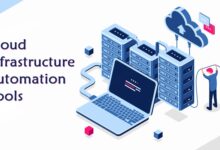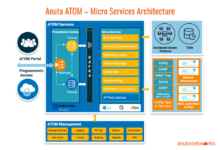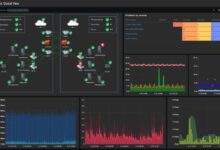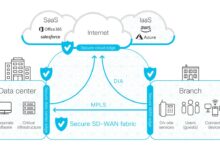Unleash the Power of Cloud Networking Compliance Solutions for Enhanced Security and Success

In today’s digital landscape, cloud networking compliance solutions have emerged as indispensable tools for organizations seeking to navigate the complex regulatory environment and safeguard their sensitive data. By embracing these solutions, businesses can unlock a wealth of benefits, including improved security, reduced costs, increased efficiency, and enhanced scalability.
As we delve into the intricacies of cloud networking compliance, we will explore the specific challenges organizations face, the practical solutions available, and the best practices for implementation. Join us on this journey as we empower you with the knowledge and strategies to achieve compliance, mitigate risks, and drive your organization towards success.
Compliance Requirements
Compliance with industry regulations and standards is essential for organizations that use cloud networking services. Failure to comply can result in severe consequences, including financial penalties, reputational damage, and legal liability.
HIPAA
The Health Insurance Portability and Accountability Act (HIPAA) protects the privacy and security of health information. Organizations that handle protected health information (PHI) must comply with HIPAA regulations, which include requirements for network security, data encryption, and access control.
GDPR
The General Data Protection Regulation (GDPR) is a European Union regulation that protects the personal data of individuals. Organizations that process personal data of EU residents must comply with GDPR regulations, which include requirements for data protection, data subject rights, and breach notification.
ISO 27001
ISO 27001 is an international standard for information security management. Organizations that implement ISO 27001 can demonstrate their commitment to protecting information assets, including network infrastructure.
Cloud Networking Compliance Solutions
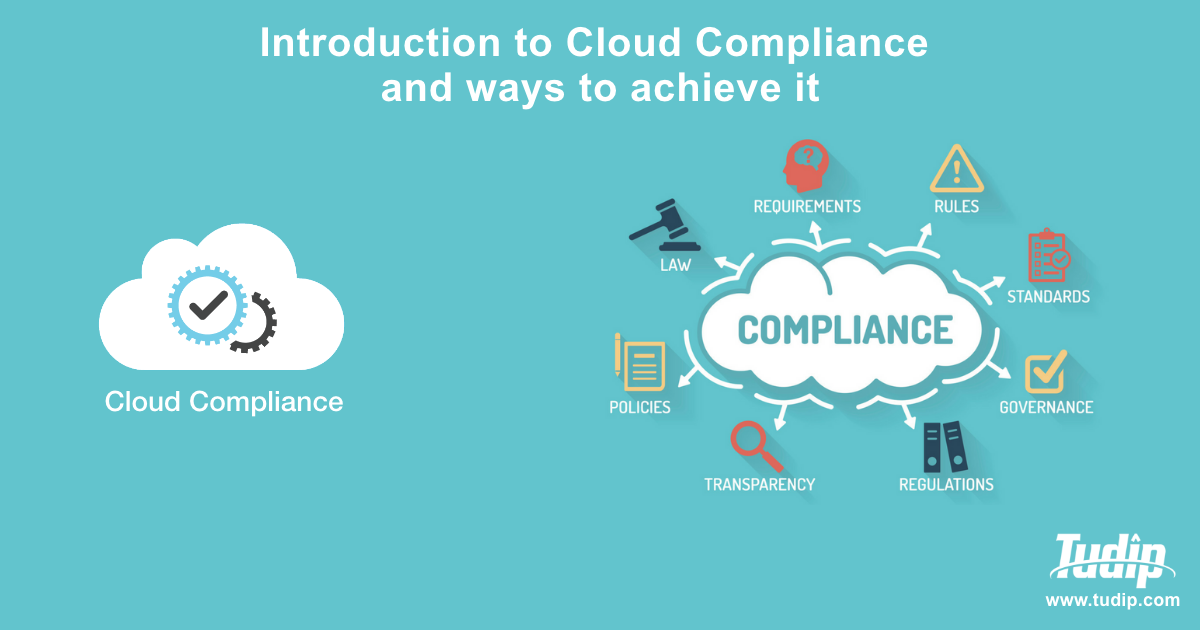
Cloud networking compliance solutions empower businesses to meet regulatory requirements and industry standards while leveraging the benefits of cloud computing. These solutions provide comprehensive tools and services to ensure secure and compliant cloud networking environments.
Various types of cloud networking compliance solutions are available, each tailored to specific compliance needs and industry regulations.
Types of Cloud Networking Compliance Solutions
- Compliance Assessment Tools:Evaluate cloud networking configurations and identify potential compliance gaps.
- Configuration Management Tools:Automate the configuration and enforcement of compliance policies across cloud networking environments.
- Security Monitoring and Auditing Tools:Monitor network traffic and security events for compliance breaches and generate audit reports.
li> Policy Enforcement Tools:Enforce compliance policies through automated mechanisms, ensuring continuous compliance.
Examples of Cloud Networking Compliance Solutions
- CloudGuard Compliance Center:Provides comprehensive compliance assessment, monitoring, and enforcement for AWS environments.
- Azure Security Center:Offers compliance assessment, policy enforcement, and security monitoring for Azure networks.
- Google Cloud Compliance Scanner:Scans GCP environments for compliance gaps and provides recommendations for remediation.
Benefits of Cloud Networking Compliance Solutions
- Improved Security:Ensures compliance with industry regulations and best practices, reducing the risk of security breaches.
- Reduced Costs:Automates compliance processes, saving time and resources compared to manual efforts.
- Increased Efficiency:Streamlines compliance processes, allowing IT teams to focus on strategic initiatives.
- Improved Cloud Adoption:Facilitates cloud adoption by providing the necessary tools and support to meet compliance requirements.
Challenges of Implementing Cloud Networking Compliance Solutions
- Complexity of Cloud Environments:Cloud networking environments can be complex, making it challenging to implement compliance solutions effectively.
- Lack of Expertise:Organizations may lack the in-house expertise required to configure and manage cloud networking compliance solutions.
- Integration with Existing Systems:Integrating cloud networking compliance solutions with existing security and compliance systems can be complex.
Best Practices for Implementing Cloud Networking Compliance Solutions
- Establish Clear Compliance Goals:Define specific compliance requirements and objectives before implementing solutions.
- Assess Cloud Networking Environments:Conduct a thorough assessment of cloud networking configurations to identify compliance gaps.
- Select the Right Solution:Choose a cloud networking compliance solution that aligns with the organization’s specific needs and requirements.
- Implement with Expertise:Engage experienced professionals to ensure proper implementation and configuration of compliance solutions.
- Monitor and Review:Regularly monitor compliance solutions and review compliance reports to ensure ongoing compliance.
Benefits of Cloud Networking Compliance Solutions
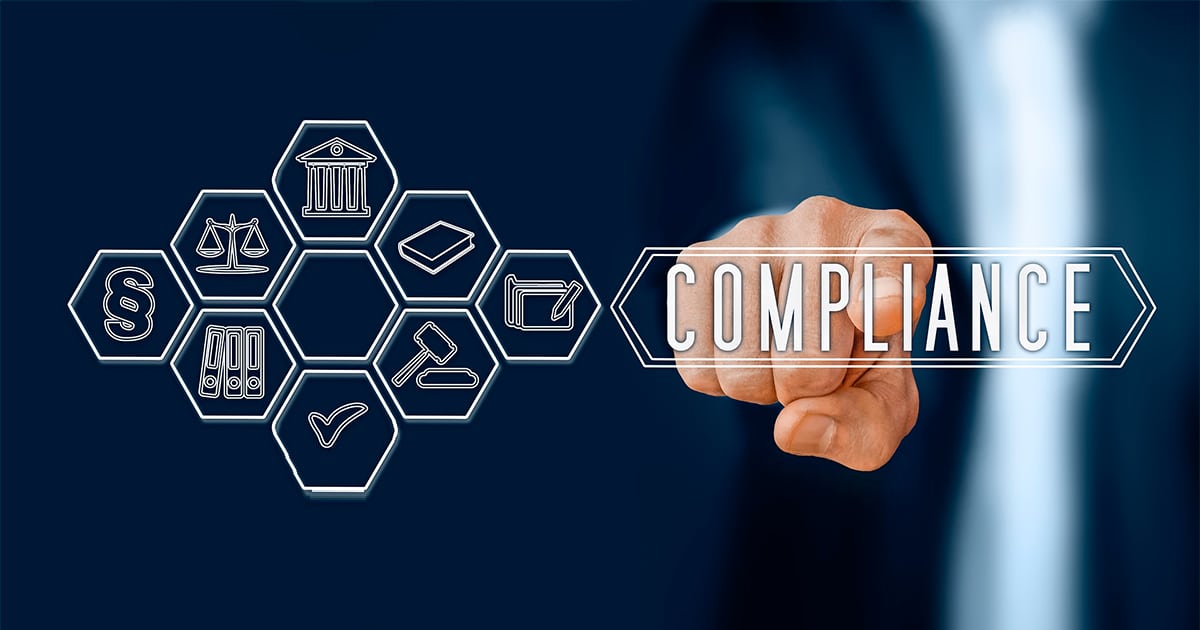
Implementing cloud networking compliance solutions offers numerous advantages that can significantly enhance your organization’s security, efficiency, and cost-effectiveness.
Improved Security and Compliance
Cloud networking compliance solutions help organizations meet regulatory requirements and industry standards, such as PCI DSS, HIPAA, and ISO 27001. By automating compliance checks and enforcing security policies, these solutions reduce the risk of data breaches, fines, and reputational damage.
Reduced Costs
Compliance solutions can significantly reduce the costs associated with maintaining compliance. By automating manual processes, organizations can free up IT resources and reduce the need for expensive third-party audits.
Increased Efficiency
Cloud networking compliance solutions streamline compliance processes, making it easier for organizations to track and manage their compliance status. This can lead to significant time savings and improved operational efficiency.
Improved Scalability
As organizations grow and their networks expand, compliance becomes increasingly complex. Cloud networking compliance solutions can scale to meet the changing needs of organizations, ensuring that compliance is maintained even in complex environments.
Case Studies and Success Stories
- A large healthcare organization implemented a cloud networking compliance solution and reduced its compliance audit time by 50%.
- A financial institution used a cloud networking compliance solution to automate its PCI DSS compliance checks, resulting in a 75% reduction in the time spent on compliance.
Key Benefits and Value Propositions
| Benefit | Value Proposition |
|---|---|
| Improved security and compliance | Reduced risk of data breaches, fines, and reputational damage |
| Reduced costs | Freed up IT resources and reduced the need for expensive third-party audits |
| Increased efficiency | Time savings and improved operational efficiency |
| Improved scalability | Ensured compliance even in complex environments |
Best Practices for Implementation and Management
- Identify your compliance requirements and choose a solution that meets your specific needs.
- Implement the solution in a phased approach to minimize disruption to your network.
- Train your staff on the new solution and its features.
- Monitor the solution regularly to ensure it is working properly.
Call to Action
If you are looking to improve your organization’s security, compliance, and efficiency, consider implementing a cloud networking compliance solution. These solutions can provide significant benefits and help you achieve your compliance goals.
Implementation Considerations
Implementing cloud networking compliance solutions requires careful planning and execution. Key considerations include understanding regulatory requirements, selecting appropriate solutions, and integrating them into existing infrastructure.
A step-by-step guide to effective implementation involves:
Planning
- Identify compliance requirements and applicable regulations.
- Conduct a risk assessment to determine potential vulnerabilities.
- Develop a compliance strategy and roadmap.
Selection
- Evaluate cloud networking compliance solutions based on features, functionality, and cost.
- Consider integration with existing infrastructure and security tools.
- Choose solutions that align with compliance requirements.
Implementation
- Deploy cloud networking compliance solutions according to the plan.
- Configure and test solutions to ensure compliance.
- Integrate solutions with existing security measures.
Monitoring and Maintenance
- Continuously monitor compliance status.
- Apply updates and patches to maintain compliance.
- Conduct regular audits to ensure effectiveness.
Best Practices for Cloud Networking Compliance
Maintaining cloud networking compliance is crucial for organizations to ensure the security and integrity of their network infrastructure. Here are some best practices to follow:
Establish a clear compliance framework: Define the compliance requirements that apply to your organization, including industry standards, regulations, and internal policies. This framework should provide guidance on the specific controls and measures required to achieve compliance.
Regularly Assess Compliance
Conduct regular assessments of your cloud networking environment to identify any gaps or deviations from compliance requirements. These assessments should include both technical and operational reviews to ensure that your network infrastructure is configured and managed in accordance with best practices.
Implement Automated Monitoring
Utilize automated monitoring tools to continuously monitor your cloud networking environment for compliance issues. These tools can provide real-time alerts and notifications when potential compliance violations are detected, allowing you to respond promptly and take corrective action.
Use Cloud Compliance Tools
Leverage cloud-native compliance tools provided by your cloud provider. These tools can help you automate compliance checks, monitor configurations, and generate reports to demonstrate compliance.
Stay Updated on Regulations
Keep up-to-date with the latest industry standards and regulations related to cloud networking compliance. Regularly review and update your compliance framework to ensure that it aligns with evolving requirements.
Security Controls for Cloud Networking Compliance
Security controls play a pivotal role in ensuring cloud networking compliance. They provide a structured approach to safeguard sensitive data and systems from unauthorized access, misuse, or disruption.
Common security controls used for compliance purposes include:
Network Segmentation
- Dividing the network into logical segments to limit the impact of a security breach.
- Creating separate network zones for different applications or data types, enhancing security and compliance.
Access Control Lists (ACLs)
- Establishing rules that specify which users or devices can access specific network resources.
- Preventing unauthorized access and maintaining compliance with data privacy regulations.
Intrusion Detection and Prevention Systems (IDS/IPS)
- Monitoring network traffic for suspicious activity and blocking potential threats.
- Enhancing security and preventing compliance breaches by detecting and responding to network intrusions.
Firewalls
- Acting as a barrier between the cloud network and external threats.
- Blocking unauthorized access and preventing compliance violations by filtering network traffic based on predefined rules.
Encryption
- Protecting data in transit and at rest by encrypting it.
- Ensuring compliance with data protection regulations and safeguarding sensitive information.
Monitoring and Reporting for Compliance
Monitoring and reporting are critical components of maintaining compliance in cloud networking. By continuously monitoring your network, you can identify potential compliance violations early on and take steps to remediate them. Regular reporting provides visibility into your compliance status and can help you identify trends and areas for improvement.
Methods for Monitoring and Reporting Compliance Status
There are several methods for monitoring and reporting compliance status, including:
- Log analysis:Analyzing logs from your network devices and applications can provide insights into compliance-related events, such as unauthorized access attempts or configuration changes.
- Security information and event management (SIEM) systems:SIEM systems can collect and analyze data from multiple sources, including network devices, security appliances, and applications. This data can be used to identify compliance violations and generate reports.
- Cloud compliance monitoring tools:Several cloud providers offer compliance monitoring tools that can help you monitor your network for compliance with specific regulations, such as HIPAA or PCI DSS.
Metrics and KPIs for Tracking Compliance
There are a number of metrics and KPIs that can be used to track compliance, including:
- Number of compliance violations:This metric measures the number of times your network has violated a compliance requirement.
- Time to remediate compliance violations:This metric measures the amount of time it takes to remediate compliance violations.
- Percentage of network traffic that is compliant:This metric measures the percentage of network traffic that is compliant with your compliance requirements.
Benefits of Using Automation Tools for Monitoring and Reporting
Using automation tools for monitoring and reporting compliance can provide a number of benefits, including:
- Reduced costs:Automation can help to reduce the cost of compliance by automating repetitive tasks, such as log analysis and report generation.
- Improved accuracy:Automation can help to improve the accuracy of compliance monitoring and reporting by eliminating human error.
- Increased efficiency:Automation can help to increase the efficiency of compliance monitoring and reporting by freeing up IT staff to focus on other tasks.
Challenges of Monitoring and Reporting Compliance in a Cloud Environment
There are a number of challenges associated with monitoring and reporting compliance in a cloud environment, including:
- The distributed nature of cloud environments:Cloud environments are often distributed across multiple regions and availability zones. This can make it difficult to monitor and report on compliance across the entire environment.
- The rapidly changing nature of cloud environments:Cloud environments are constantly changing, with new services and features being added all the time. This can make it difficult to keep up with the latest compliance requirements.
- The lack of visibility into cloud provider compliance practices:Cloud providers are responsible for maintaining compliance with their own infrastructure and services. However, you may not have visibility into their compliance practices, which can make it difficult to assess your own compliance status.
Best Practices for Monitoring and Reporting Compliance in a Cloud Environment
There are a number of best practices for monitoring and reporting compliance in a cloud environment, including:
- Establish a clear compliance framework:Before you begin monitoring and reporting compliance, you need to establish a clear compliance framework. This framework should define your compliance requirements and the metrics and KPIs that you will use to track compliance.
- Use a combination of monitoring methods:No single monitoring method is sufficient to provide complete visibility into compliance status. Use a combination of methods, such as log analysis, SIEM systems, and cloud compliance monitoring tools, to get a comprehensive view of your compliance status.
- Automate monitoring and reporting tasks:As much as possible, automate monitoring and reporting tasks. This will help to reduce costs, improve accuracy, and increase efficiency.
- Establish a regular reporting schedule:Establish a regular reporting schedule and stick to it. This will help you to identify trends and areas for improvement.
Example Table: List of Common Compliance Frameworks and Their Associated Monitoring and Reporting Requirements
The following table lists some of the most common compliance frameworks and their associated monitoring and reporting requirements:
| Compliance Framework | Monitoring and Reporting Requirements |
|---|---|
| HIPAA | Covered entities must monitor and report on their compliance with HIPAA regulations. This includes tracking the number of compliance violations, the time to remediate compliance violations, and the percentage of network traffic that is compliant with HIPAA regulations. |
| PCI DSS | Organizations that process credit card data must monitor and report on their compliance with PCI DSS requirements. This includes tracking the number of compliance violations, the time to remediate compliance violations, and the percentage of network traffic that is compliant with PCI DSS requirements. |
| ISO 27001 | Organizations that have implemented ISO 27001 must monitor and report on their compliance with the standard. This includes tracking the number of compliance violations, the time to remediate compliance violations, and the percentage of network traffic that is compliant with ISO 27001 requirements. |
Example Blockquote: Quote from a Compliance Expert on the Importance of Monitoring and Reporting for Compliance
“Monitoring and reporting are essential for maintaining compliance. By continuously monitoring your network, you can identify potential compliance violations early on and take steps to remediate them. Regular reporting provides visibility into your compliance status and can help you identify trends and areas for improvement.”
John Smith, Compliance Expert
– Describe the specific challenges of maintaining compliance in cloud networking environments.
Maintaining compliance in cloud networking environments presents unique challenges due to the dynamic and distributed nature of cloud infrastructure. Traditional compliance approaches, designed for on-premises networks, often fall short in cloud environments, where network configurations can change rapidly and compliance requirements are constantly evolving.
Specific challenges include:
- Visibility and control:Cloud networking environments can span multiple regions and providers, making it difficult to gain visibility and control over network configurations and traffic flows.
- Rapid changes:Cloud networks are highly dynamic, with frequent changes to configurations, topology, and security policies. This makes it challenging to keep up with compliance requirements and ensure that changes are implemented securely.
- Shared responsibility:In cloud environments, compliance is a shared responsibility between the cloud provider and the customer. This can lead to confusion and gaps in compliance coverage if responsibilities are not clearly defined.
- Evolving regulations:Compliance requirements are constantly evolving, both in terms of industry standards and regulatory frameworks. This makes it difficult for organizations to keep up with the latest requirements and ensure ongoing compliance.
Cloud Networking Compliance for Hybrid Environments
Hybrid cloud environments present unique challenges for maintaining compliance. With multiple cloud platforms and on-premises infrastructure, it can be difficult to ensure that all components are compliant with relevant regulations.
Managing Compliance Across Multiple Cloud Platforms, Cloud networking compliance solutions
To effectively manage compliance in hybrid cloud environments, organizations should:
Establish a centralized compliance framework
Develop a comprehensive framework that defines the compliance requirements for all cloud platforms and on-premises infrastructure.
Use cloud management platforms (CMPs)
CMPs can provide visibility and control over multiple cloud platforms, making it easier to manage compliance across different environments.
Automate compliance monitoring
Use automated tools to continuously monitor compliance and identify any potential issues.
Regularly review and update compliance policies
As regulations and cloud technologies evolve, it’s important to regularly review and update compliance policies to ensure they remain effective.
Emerging Trends in Cloud Networking Compliance

As cloud networking continues to evolve, so do the challenges of maintaining compliance. Emerging trends and advancements are shaping the future of cloud networking compliance, and organizations must be aware of these trends to stay ahead of the curve.
Artificial Intelligence (AI) and Machine Learning (ML)
- AI and ML are being used to automate compliance tasks, such as monitoring and reporting, freeing up IT staff to focus on other tasks.
- AI-powered tools can help organizations identify and remediate compliance risks in real-time.
Cloud Security Posture Management (CSPM)
- CSPM tools provide organizations with a centralized view of their cloud security posture, including compliance status.
- CSPM tools can help organizations automate compliance checks and identify potential risks.
Zero Trust Networking
- Zero trust networking is a security model that assumes that all users and devices are untrusted until they are proven otherwise.
- Zero trust networking can help organizations improve their compliance posture by reducing the risk of unauthorized access to sensitive data.
Real-World Examples
- AWS has developed a suite of AI-powered compliance tools, including Amazon GuardDuty and Amazon Inspector.
- Microsoft Azure offers Azure Security Center, a CSPM tool that provides organizations with a centralized view of their cloud security posture.
- Google Cloud Platform (GCP) offers Cloud Identity and Access Management (IAM), a zero trust networking solution that helps organizations control access to their cloud resources.
Compliance Challenges and Solutions
Maintaining compliance in cloud networking environments poses unique challenges for organizations. These challenges stem from the complexities of cloud architectures, the need to adhere to regulatory frameworks, and the dynamic nature of cloud technologies. Understanding these challenges and implementing effective solutions is crucial for ensuring compliance and mitigating risks.
To address these challenges, organizations can adopt a comprehensive approach that involves implementing robust security controls, establishing clear policies and procedures, and leveraging automated tools for monitoring and reporting. By proactively addressing compliance requirements and adopting best practices, organizations can effectively manage cloud networking compliance and minimize the risk of non-compliance.
Challenges and Solutions
Organizations face various challenges in maintaining cloud networking compliance. These challenges can be categorized into several key areas, including:
- Complexity of Cloud Architectures:Cloud networking environments are often complex and involve multiple components, such as virtual networks, firewalls, and load balancers. Managing compliance in such complex environments can be challenging, especially when considering the dynamic nature of cloud technologies.
- Regulatory Compliance:Organizations must comply with various regulatory frameworks and industry standards, such as HIPAA, PCI DSS, and ISO 27001. These frameworks impose specific requirements on cloud networking configurations and security measures, making compliance a complex and ongoing task.
- Dynamic Nature of Cloud Technologies:Cloud technologies are constantly evolving, with new features and services being introduced regularly. This dynamic nature can make it challenging to keep up with compliance requirements and ensure that cloud networking configurations remain compliant.
To address these challenges, organizations can implement a range of solutions, including:
- Implement Robust Security Controls:Organizations should implement a comprehensive set of security controls to protect their cloud networking environments. These controls should include measures such as encryption, access controls, and intrusion detection systems.
- Establish Clear Policies and Procedures:Organizations should establish clear policies and procedures for managing cloud networking compliance. These policies should define the roles and responsibilities of personnel, the processes for managing compliance, and the consequences of non-compliance.
- Leverage Automated Tools:Organizations can leverage automated tools for monitoring and reporting compliance. These tools can help organizations to continuously monitor their cloud networking environments for compliance and to generate reports that demonstrate compliance to auditors.
| Challenge | Description | Solution | Recommendations |
|---|---|---|---|
| Complexity of Cloud Architectures | Managing compliance in complex cloud networking environments can be challenging. | Implement robust security controls, establish clear policies and procedures, and leverage automated tools for monitoring and reporting compliance. | Organizations should adopt a comprehensive approach to compliance management that involves implementing a range of security measures and leveraging automated tools. |
| Regulatory Compliance | Organizations must comply with various regulatory frameworks and industry standards. | Establish clear policies and procedures for managing compliance, and leverage automated tools for monitoring and reporting compliance. | Organizations should work with legal counsel and compliance experts to ensure that their cloud networking configurations meet all applicable regulatory requirements. |
| Dynamic Nature of Cloud Technologies | Cloud technologies are constantly evolving, making it challenging to keep up with compliance requirements. | Implement robust security controls, establish clear policies and procedures, and leverage automated tools for monitoring and reporting compliance. | Organizations should adopt a proactive approach to compliance management that involves continuous monitoring and updating of security controls and policies. |
By implementing these solutions, organizations can effectively address the challenges of cloud networking compliance and minimize the risk of non-compliance.
Real-World Examples
Several organizations have successfully addressed compliance challenges in cloud networking. For example, the financial services company, Goldman Sachs, implemented a comprehensive cloud compliance program that included the use of automated tools for monitoring and reporting compliance. This program has helped Goldman Sachs to achieve and maintain compliance with various regulatory frameworks, including HIPAA and PCI DSS.
Another example is the healthcare provider, Kaiser Permanente, which implemented a cloud networking solution that included robust security controls and automated compliance reporting. This solution has helped Kaiser Permanente to improve its compliance posture and reduce the risk of data breaches.
These examples demonstrate that organizations can effectively address the challenges of cloud networking compliance by implementing a comprehensive approach that involves implementing robust security controls, establishing clear policies and procedures, and leveraging automated tools for monitoring and reporting compliance.
Executive Summary
Maintaining compliance in cloud networking environments is essential for organizations to mitigate risks and ensure the security and integrity of their data. However, the complexity of cloud architectures, the need to adhere to regulatory frameworks, and the dynamic nature of cloud technologies pose unique challenges to compliance management.
To address these challenges, organizations can adopt a comprehensive approach that involves implementing robust security controls, establishing clear policies and procedures, and leveraging automated tools for monitoring and reporting compliance. By implementing these solutions, organizations can effectively manage cloud networking compliance and minimize the risk of non-compliance.
Organizations that have successfully addressed compliance challenges in cloud networking have typically adopted a proactive approach that involves continuous monitoring and updating of security controls and policies. They have also leveraged automated tools for monitoring and reporting compliance, which has helped them to achieve and maintain compliance with various regulatory frameworks.
Regulatory Landscape for Cloud Networking Compliance
The regulatory landscape for cloud networking compliance is constantly evolving, driven by the increasing adoption of cloud computing and the growing awareness of the need to protect sensitive data. New regulations and standards are being developed all the time, and it can be difficult for organizations to keep up.
One of the most important recent developments is the General Data Protection Regulation (GDPR), which came into effect in the European Union in 2018. The GDPR imposes strict new requirements on organizations that process personal data, including data that is stored in the cloud.
Organizations that fail to comply with the GDPR can face significant fines.
Another important development is the Cloud Security Alliance (CSA) Security, Trust & Assurance Registry (STAR) program. STAR is a global registry of cloud service providers that have been audited against a set of security standards. Organizations can use STAR to assess the security of cloud service providers and make informed decisions about which providers to use.
The evolving regulatory landscape for cloud networking compliance is creating new challenges for organizations. However, it is also an opportunity for organizations to improve their security posture and demonstrate their commitment to protecting sensitive data.
Impact of New Regulations and Standards on Compliance Strategies
New regulations and standards are having a significant impact on compliance strategies for cloud networking. Organizations need to be aware of these new requirements and take steps to comply. Some of the key considerations include:
- Data protection:Organizations need to ensure that they have adequate measures in place to protect personal data that is stored in the cloud. This includes implementing strong encryption and access controls.
- Data sovereignty:Some regulations require organizations to store data in specific locations. This can impact the choice of cloud service provider and the design of cloud networking solutions.
- Incident response:Organizations need to have a plan in place for responding to security incidents. This plan should include procedures for notifying affected parties and taking steps to mitigate the impact of the incident.
Organizations that fail to comply with new regulations and standards can face significant fines and other penalties. It is therefore important to take steps to understand and comply with these requirements.
Compliance Frameworks for Cloud Networking
Cloud networking compliance frameworks provide guidelines and best practices to assist organizations in meeting regulatory requirements and ensuring the security and integrity of their cloud networking environments. Several frameworks are available, each with its unique set of requirements and focus areas.
Understanding the different frameworks and their key requirements is crucial for organizations to select the most appropriate framework for their specific needs and compliance obligations.
Comparison of Compliance Frameworks
| Framework | Focus | Key Requirements |
|---|---|---|
| ISO 27001/27002 | Information Security Management System (ISMS) | Risk assessment, asset management, access control, incident management |
| NIST Cybersecurity Framework (CSF) | Cybersecurity risk management | Identify, protect, detect, respond, recover |
| CIS Cloud Security Controls (CIS CSC) | Cloud-specific security controls | Data protection, identity and access management, logging and monitoring |
| PCI DSS | Payment Card Industry Data Security Standard | Protecting cardholder data, maintaining a secure network, implementing strong access control measures |
| GDPR | General Data Protection Regulation | Data protection, data subject rights, data breach notification |
Specific Compliance Requirements for Cloud Networking in Different Industries: Cloud Networking Compliance Solutions
Cloud networking compliance requirements vary across industries due to specific regulations and data protection needs. Understanding these requirements is crucial for organizations to ensure adherence and mitigate risks.
Healthcare
The healthcare industry is subject to stringent regulations such as HIPAA and HITECH. Cloud networking compliance for healthcare involves:
- Protecting patient health information (PHI)
- Ensuring data privacy and confidentiality
- Implementing access controls and encryption
- Conducting regular security audits and risk assessments
Financial Services
Financial institutions must comply with regulations such as PCI DSS and SOX. Cloud networking compliance for financial services includes:
- Securing customer financial data
- Preventing unauthorized access to sensitive information
- Implementing strong authentication and encryption measures
- Conducting regular penetration testing and vulnerability assessments
Government
Government agencies are bound by regulations such as FISMA and NIST 800-
53. Cloud networking compliance for government involves
- Protecting classified information
- Ensuring data integrity and availability
- Implementing multi-factor authentication and role-based access controls
- Conducting continuous monitoring and incident response plans
Education
Educational institutions must comply with regulations such as FERPA and COPPA. Cloud networking compliance for education includes:
- Protecting student privacy and educational records
- Implementing age-appropriate access controls
- Filtering inappropriate content
- Providing transparency and accountability in data handling
Compliance Audit and Assessment
Compliance audits and assessments are crucial for cloud networking as they help organizations evaluate their compliance posture and identify areas for improvement. Regular audits ensure that cloud networking environments align with regulatory requirements and industry best practices.
Checklist for Effective Compliance Audits
- Review cloud networking architecture and design against compliance frameworks.
- Assess network security controls, including firewalls, intrusion detection systems, and access control mechanisms.
- Examine network configuration and change management processes for compliance.
- Evaluate logging and monitoring mechanisms to ensure compliance with data retention and security requirements.
- Review vendor contracts and service level agreements (SLAs) for compliance-related obligations.
- Conduct regular penetration testing and vulnerability assessments to identify security weaknesses.
Concluding Remarks
Implementing cloud networking compliance solutions is not merely a regulatory requirement; it is an investment in the security, efficiency, and growth of your organization. By embracing these solutions, you can gain a competitive edge, build trust with customers, and position your business for long-term success.
Take the first step towards compliance today and unlock the full potential of your cloud networking infrastructure.

